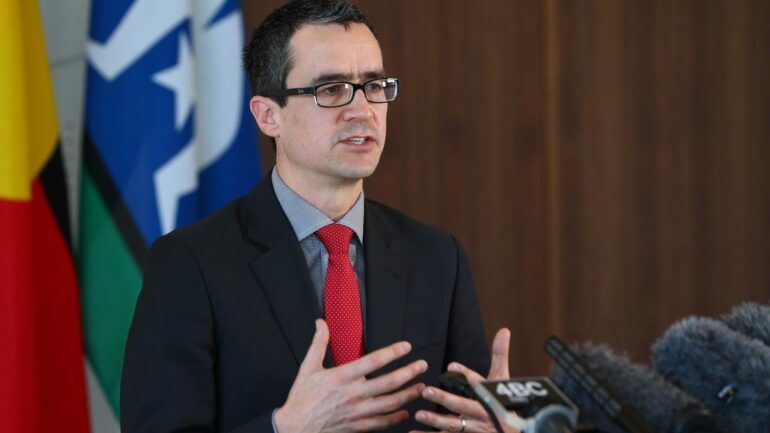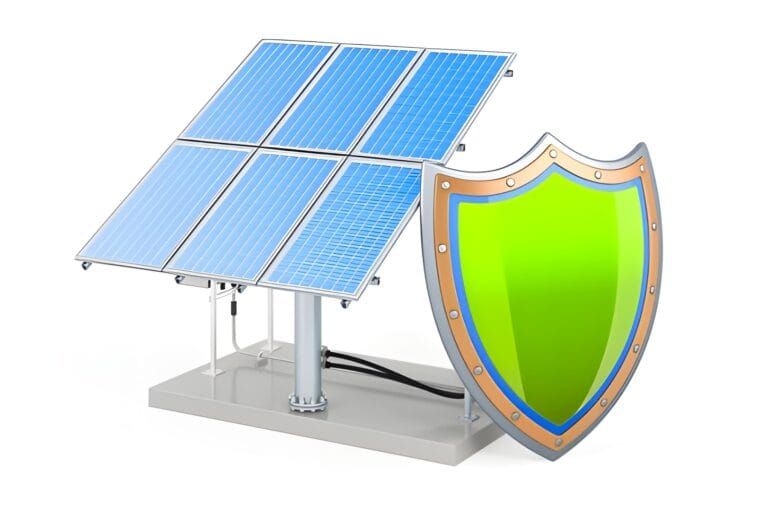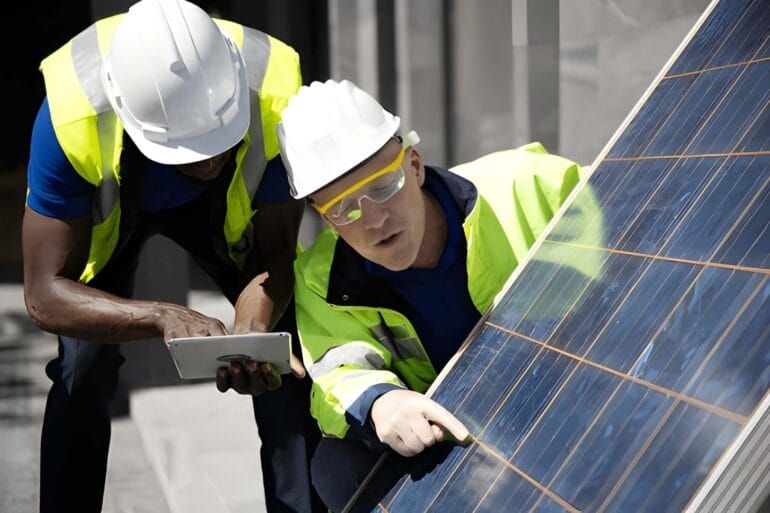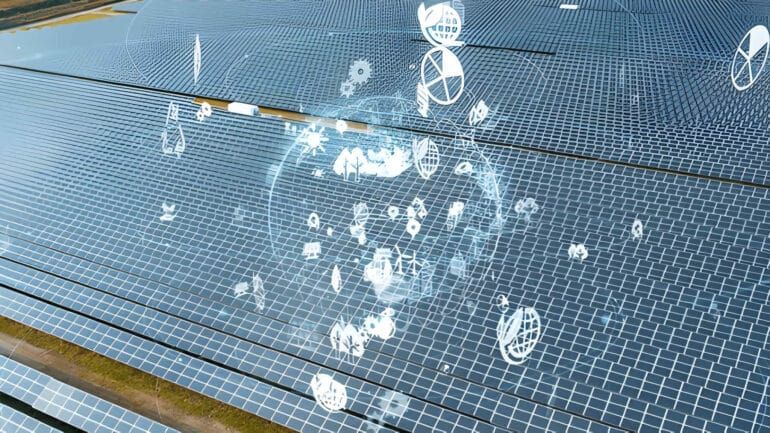In the world of renewable energy, battery storage projects and generation projects off target have made an extraordinary impact in the second quarter of 2023, surpassing a billion dollars in investments. However, despite this milestone, Australia’s journey towards achieving its ambitious target of 82 percent renewable energy by 2030 faces a significant hurdle. A freshly released report by the esteemed Clean Energy Council presents a comprehensive analysis of the current state of affairs.
Record Investments in Battery Storage Projects, Yet a Long Way to Go
The recent “Renewable Projects Quarterly Report” by the Clean Energy Council reveals an astonishing surge in battery storage projects and generation projects off target. A total of $2 billion has been channeled into storage and hybrid projects, marking an unprecedented achievement during the second quarter of the year. This surge is indicative of the growing interest and confidence in the potential of battery storage solutions.
However, the report also uncovers a contrasting reality. Despite the soaring investments in storage, the progress of generation projects lags behind expectations. While there has been a notable improvement in generation project results compared to the previous quarter, the total investments in these projects for the current year remain alarmingly low. The figures fall short by 50 percent when compared to the rolling 12-month quarterly average of 699MW, which is a crucial metric for Australia’s march towards achieving its 2030 renewable energy target.
Key Insights from the Quarterly Report
The “Renewable Projects Quarterly Report” provides valuable insights into the dynamics of the renewable energy landscape in Australia:
1. Battery Storage Leading the Financial Charge
During the second quarter of 2023, battery storage projects have emerged as the vanguard of financial commitments. A remarkable achievement has been unlocked with the addition of six projects, collectively contributing a capacity of 3,802MW/h across the nation. This milestone not only signifies a record-breaking feat but also underscores the integral role battery storage plays in shaping the energy landscape.
2. Construction and Commissioning Gather Momentum
Construction activities within the renewable energy sector remain robust. The report highlights that four-generation projects have commenced construction, adding an impressive 1172MW of capacity during the quarter. Furthermore, five projects have advanced to the commissioning stage, injecting a cumulative capacity of 551MW into the energy grid. These developments affirm the steady progress and tangible growth within the sector.
3. Challenges in Generation Project Investments
Despite the strides made in various sectors, the report raises concerns about generation project investments. The first half of the current year has witnessed a sluggish pace in new financial commitments in generation projects. In fact, the report identifies this period as the slowest since the Clean Energy Council’s data recording commenced in 2017. The financial commitments in large-scale generation projects during Q2 amounted to 348MW, valued at $225 million. This figure is starkly lower, standing at more than $1 billion (82.3 percent) below the rolling quarterly average over the past year, which rested at $1.3 billion.
Call for Further Action
Kane Thornton, the Chief Executive of the Clean Energy Council, acknowledges the encouraging increase in investment activity. However, he stresses that there’s still a long road ahead. The recent boost in political support for the clean energy transition is a positive sign, but a history of inadequate leadership, planning, and foresight over the preceding decade has left a legacy of challenges.
Thornton outlines these challenges, which include underinvestment in transmission, grid connectivity issues, inconsistent planning policies, supply chain constraints, and workforce limitations. As Australia competes with global leaders that are rapidly embracing renewable energy, these barriers pose significant obstacles for local projects. Despite the promising pipeline of renewable energy initiatives, Australian projects find themselves competing with enticing global opportunities amid a landscape of uncertainty.

Thornton emphasizes that the critical development needed to achieve the ambitious 82 percent renewable generation target by 2030 is not assured unless these barriers are effectively addressed. The call to action is clear—identifying and tackling the hurdles that currently cast shadows of uncertainty over new energy generation investments.
Continued Progress in Q2
The second quarter of 2023 has witnessed commendable progress. Five generation and storage projects have commenced their construction phases. Additionally, a total of nine projects have successfully reached the final commissioned stage during this period, resulting in a substantial investment sum of $1.3 billion. These developments not only highlight the evolving landscape of renewable energy in Australia but also underscore the determination to push forward and overcome the challenges that lie ahead.
Navigating Challenges: Identifying Potential Pitfalls
In the landscape of generation projects, challenges abound. From regulatory hurdles to technological limitations, each step demands meticulous attention. By identifying these pitfalls early on, mitigation strategies can be put in place, assuring smoother project progression.
The Power of Data-Driven Insights
Data serves as the compass guiding generation projects. Leveraging advanced analytics and insights equips project managers with the ability to make informed decisions. Real-time data empowers teams to adapt to dynamic conditions, optimizing efficiency and resource allocation.
Execution Excellence: Bridging Planning and Implementation
A seamless transition from planning to execution is where many projects falter. Bridging this gap requires cohesive teamwork, streamlined communication, and agile methodologies. This phase is the heartbeat of the project, demanding proactive measures to ensure timelines and quality are upheld.
Precision Monitoring and Adaptation
Continuous monitoring forms the backbone of precision. Regular assessment against predefined benchmarks allows for timely interventions. In the face of unforeseen circumstances, adaptability becomes paramount. Flexibility in project management strategies ensures that deviations don’t derail the overarching objectives.
Collaborative Synergy: Stakeholder Engagement
The success of generation projects extends beyond technical prowess; it’s about fostering relationships. Engaging stakeholders – from local communities to industry experts – cultivates a network of support. Their insights provide a broader perspective, enriching the project’s overall outcome.
Challenges Faced by Generation Projects
While battery storage is experiencing rapid growth, generation projects, particularly in the realm of renewable energy, are facing challenges that have hindered their progress. These challenges include:
Regulatory Hurdles: Stringent regulations and lengthy permitting processes often delay the development of generation projects, making it difficult to meet targets.
Infrastructure Limitations: Inadequate infrastructure, such as transmission lines and grid connections, can impede the efficient integration of renewable energy generation into the grid.
Land and Resource Constraints: Identifying suitable land for large-scale generation projects, especially solar and wind farms, can be challenging. Additionally, resource availability and accessibility can impact project feasibility.
Technological Barriers: The pace of technological advancements in renewable energy can sometimes outstrip the ability of generation projects to incorporate the latest innovations, leading to suboptimal performance.
The Intersection: Battery Storage and Generation Projects off target
The convergence of battery storage and generation projects presents both opportunities and complexities. By integrating battery storage systems into generation projects, the energy sector can address some of the challenges faced by each segment individually. This synergy offers benefits such as:
Smooth Energy Delivery: Battery storage can mitigate the intermittency of renewable sources, ensuring a steady and reliable energy supply.
Demand Response: Battery storage enables generation projects to respond to demand fluctuations effectively, thereby contributing to grid stability.
Energy Trading: Combined projects can harness excess energy during periods of low demand and sell it during peak times, enhancing revenue streams.
Generation Projects: An Off-Target Scenario
While battery storage projects are making significant strides, the same cannot be said for certain generation projects of target. Despite the ambitious goals set by various countries and organizations to increase renewable energy generation, some projects are falling short of their targets. This discrepancy raises concerns about the feasibility and effectiveness of these projects in driving the much-needed transition to cleaner energy sources.
Grid Flexibility and Stability
The integration of battery storage into the grid enhances its flexibility and stability. Energy stored in batteries can be quickly dispatched to the grid during sudden demand surges or supply shortages. This mitigates the risk of blackouts and ensures a reliable power supply, especially during extreme weather events.
Overcoming Intermittency Challenges
Renewable energy sources like solar and wind are inherently intermittent. Cloudy days and calm winds can lead to fluctuations in energy generation. Battery storage systems bridge this gap by providing a buffer of stored energy that can be utilized when renewable sources are not producing electricity, thereby ensuring a consistent power supply.
CEC’s Report on Battery Storage
The Clean Energy Council’s recent report highlights the substantial growth in battery storage installations across the country. This surge is attributed to falling battery costs, government incentives, and increased awareness of sustainable energy solutions. However, while the battery storage sector thrives, there are concerns about the progress of generation projects.
Generation Project Setbacks
Despite the positive momentum in battery storage, some renewable generation projects off target projects are facing challenges. Delays in project timelines, regulatory hurdles, and land acquisition issues have contributed to setbacks in achieving the targeted generation capacity. This discrepancy between storage and generation raises questions about the overall effectiveness of the renewable energy transition.
Striking a Balance
For a comprehensive transition to a renewable energy-dominated future, it is imperative to strike a balance between battery storage and generation projects. While battery storage addresses intermittency and grid stability, generation projects remain the primary source of clean energy. A collective effort is needed to streamline approvals, enhance project execution, and ensure timely completion.
Collaborative Approach
Stakeholders, including government bodies, industry players, and communities, need to adopt a collaborative approach to overcome the challenges faced by generation projects off target. Incentivizing timely project completion, providing regulatory clarity, and investing in research and development are crucial steps in ensuring a sustainable and reliable energy future.
Conclusion
In conclusion, while battery storage projects have celebrated remarkable achievements in investment, the broader journey toward Australia’s 2030 renewable energy goal remains an intricate puzzle. The “Renewable Projects Quarterly Report” by the Clean Energy Council offers a comprehensive analysis of the present landscape, presenting both victories and challenges. As the nation navigates through these dynamics, the collective efforts to address barriers and uncertainties will play a pivotal role in shaping a cleaner and more sustainable energy future.
FAQs
Q1: What is the primary role of battery storage in the energy transition? Battery storage systems play a crucial role in storing excess energy from renewable sources and releasing it when needed, ensuring a stable power supply.
Q2: Why are certain renewable generation projects experiencing delays? Factors such as permitting issues, technical challenges, and financial uncertainties contribute to delays in renewable generation projects.
Q3: How can regulatory frameworks impact energy projects? Clear and consistent regulations are essential for providing a favorable environment for energy generation and storage projects.
Q4: What is the significance of synchronizing generation with storage? Synchronizing generation projects with battery storage deployment optimize energy utilization and reduce wastage.
Q5: What does the future hold for the energy industry’s evolution? The energy industry will continue to innovate, with a focus on striking the right balance between renewable generation and storage.







